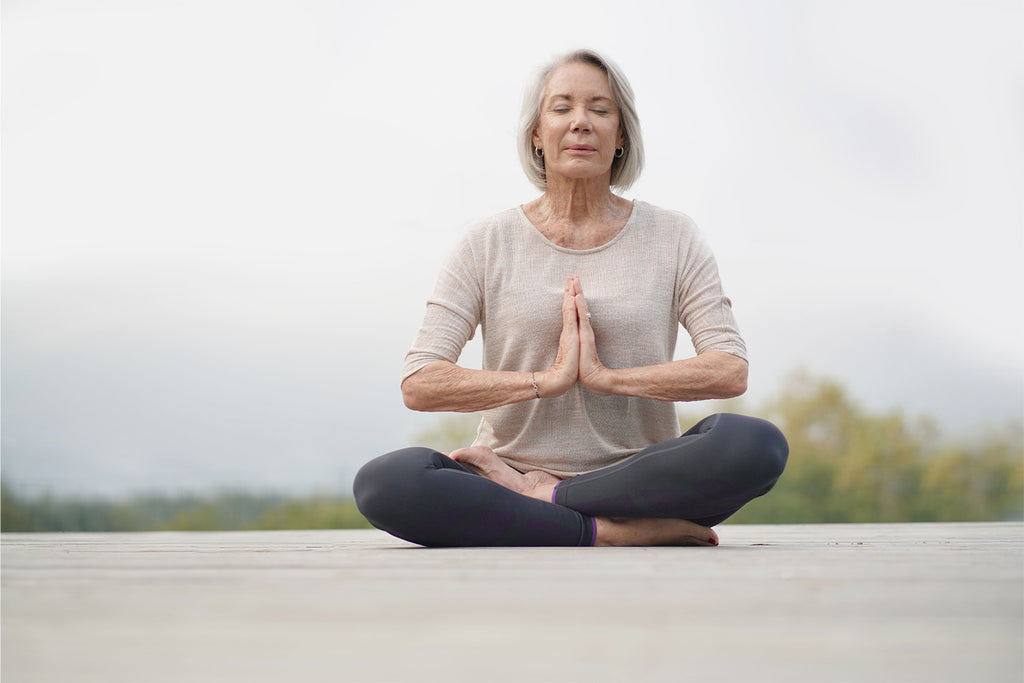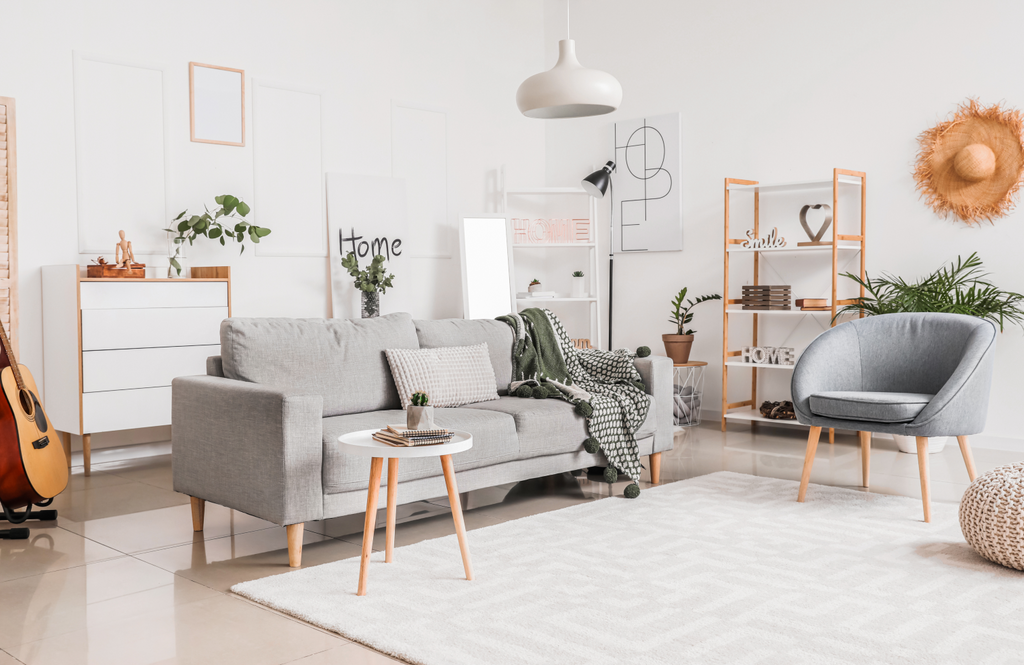
How To Use Meditation for Better Sleep

We’ve all been there: There are nights when you’re tossing and turning, and no matter what you try, you can’t seem to get any shut-eye. There are plenty of ways to get more impactful, restful sleep, but one method, in particular, is tried and true. We’re talking about meditation.
There has been a lot of information circulating the internet about meditation and its benefits for mental health. And that’s true, but meditating can also significantly increase your quality of sleep and the amount of rest you are getting.
What Is Meditation?
Before we get into how you can use meditation for sleep, we’ll provide a brief overview of the principles of meditation and what it means. In short, meditation is the practice of being mindful and present.
It’s about being fully engaged in the present moment and only worrying about the here and now. Meditation has been found to help with mental health and the overall well-being of an individual.
What Are the Benefits of Meditation?
Improved sleep is only one of the many benefits that a meditation practice can provide you with.
Here is a short list of some of the other possible outcomes of engaging in the practice:
- Helps regulate high blood pressure
- Reduces anxiety
- Relieves stress
- Decreases tobacco/nicotine cravings
- Heightens pain tolerance
- Boosts cognition
- Improves heart health
- Offers anti-inflammatory properties
- Increases focus
- Improves overall mood
These are merely a few of the benefits that you can expect out of meditation, but we know you came here to learn how it can improve your quality of sleep.
Let’s get into the different meditation types you can implement to get the best sleep possible.
How Meditation Helps With Sleep Quality
Meditation improves your ability to relax and helps to regulate your autonomic nervous system. This means you won’t wake up as easily.
Meditation also creates various changes within the body that impact our ability to sleep. Here are some of those changes in your overall wellness from a meditation session.
- Activates areas of the brain that control sleep
- Increases the production of serotonin (the hormone that comes before melatonin)
- Increases the production of melatonin (sleep hormone)
- Slows the heart rate
- Decreases blood pressure
All of these changes in the body can reduce your levels of stress and anxiety and just leave you feeling an overall sense of calm and relaxation. Since you are naturally more relaxed, you’ll find it much easier to decompress on your comfy bed.
How To Meditate for Beginners
Meditation can be done almost anywhere, seeing as how it does not require any equipment other than yourself and a willingness to be mindful. You can even meditate in a matter of a few minutes if you have the time and want to decrease your stress levels, regulate racing thoughts, and promote healthy sleep.
The most important thing you can do, though, if trying to make meditation a part of your daily life, is to create a routine. Try and designate a specific time in the day to meditate. Many people like to do it first thing in the morning, but you could also do it closer to bedtime if you want to gear the practice toward sleeping purposes.
How To Meditate Step-by-Step
Here is a very basic and broken step-by-step guide to meditation:
- Go somewhere quiet with minimal distractions. You can either sit down or lie down. Generally, lying down would work better for the benefits it offers for sleep.
- Close your eyes and begin deep breathing in through the nose, slowly and fully exhaling through the mouth. Focus your mind on this breathing exercise and nothing else.
- If your mind begins to swarm with thoughts, focus on your breathing. Let your mind wander and truly focus on feeling the air enter and leave your body, which should hopefully help block out the other noise.
While it may sound simple enough when reading the topic, meditation could take a couple of tries to get into the first time you do it. Be patient, and try not to be discouraged if you find it difficult on the first go.
You can start by meditating for a few minutes; three should be enough. Don’t be fooled: Three minutes of mindfulness and only focusing on breathing could end up feeling much longer than one might assume.
Once you can meditate for at least five minutes, slowly increase the amount of time you dedicate to meditation. It’s a practice, so the more you do it, the easier it will become.
Meditations Specific to Sleep
There are different types of meditation that are made for those who are struggling with getting quality sleep. We’ll break each one down below and explain how to do this type of meditation.
Mindfulness Meditation
This meditation is centered on being fully present in the moment and asks you to contemplate your consciousness, breathing, and your body as a whole. If thoughts and emotions come into your head, observe them and let them pass without judgment — like a cloud floating by in a blue sky.
Here are the steps for mindfulness meditation:
- Head to a quiet room and remove any distractions that may be present. This could be your phone, a loud TV, or anything else that may pull away your attention. Lie down in a comfortable spot.
- Now it’s time to work on your breathing. Inhale for ten seconds, and then hold it in for an additional ten seconds. Now exhale for ten more seconds. Repeat this process five times over.
- After completing the previous step five times, inhale and tighten/tense up your body (look more into progressive muscle relaxation if you like). Take a pause, relax the body and release the breath. Repeat this process five times.
- Take notice of your breathing and any area of the body that feels tight or tense. Consciously make an effort to relax this part of the body.
- When thoughts or emotions arise, let them drift away and continue to focus on your breathing.
Now, let’s take a look at some of the different techniques you can try for meditation to help with sleep problems and initiate the body’s relaxation response.
Body Scan Meditation
This meditation and relaxation technique asks you to focus on each part of the body to increase your awareness of bodily functions and sensations.
This means you could center on any pent-up tightness or pain in the body, working to relieve it. Concentrating on the physical sensations throughout each part of your body may make you relax easier and help you get some much-needed rest.
If you’re dealing with sleep issues, a body scan meditation session might be just what you need. Here are the steps for this meditation:
- Remove any distractions from the space you are in and lie down in a comfortable position.
- Close your eyes and begin to breathe slowly. As you breathe, try and divert your attention to the weight of your body that is lying upon the bed.
- Now move your attention away from the body as a whole and to your face specifically. Loosen up your jaw, relax your eyes, and any other muscles in the face that feel tense or locked up.
- Send your attention to the shoulders and neck. Make sure they are fully relaxed and aren’t tense in the slightest.
- Continue this process down throughout the entirety of your body. Move down to the arms and fingers, then to the stomach, back, hips, and so forth. While moving down to the body, take specific notice of how each part feels.
- If any thoughts begin to come up, slowly begin to move your focus back to what each part of your body feels like. If you want the absolute most out of this meditation, start the process over from the bottom of your body, working your way up back to the head.
Guided Meditation
Guided meditation has someone else leading you through the steps of the practice. This individual helps to guide your breathing. They instruct you on how to relax your body in a number of different ways. They could even ask to visualize certain images or try to recall a particular kind of sound (guided imagery).
You can find guided meditations in a number of different formats, such as meditation podcasts, meditation apps or websites, or streaming services.
These types of meditations may be beneficial if you find that you are having a hard time getting into meditation in general and staying on task with the practice itself.
A Good Night’s Sleep
Meditation is not only a fantastic practice to add to your daily routine in order to relieve stress, but it also is excellent for helping you get the rest that you have been looking for. When you add in a flawlessly comfortable mattress, you’ll have everything you need to catch those Zzzs.
Meditation can help to relieve stress, slow your heart rate, decrease anxiety, and have a list of other benefits that will send you into a deep, restful sleep in no time.
Sources:
Guided Sleep Meditation: How to Get Started | Very Well Mind
3 Ways to Meditate for Better Sleep | Healthline
Meditation: A simple, fast way to reduce stress | Mayo Clinic
12 Science-Based Benefits of Meditation | Healthline
Progressive Muscle Relaxation | U.S. Department of Veteran Affairs




